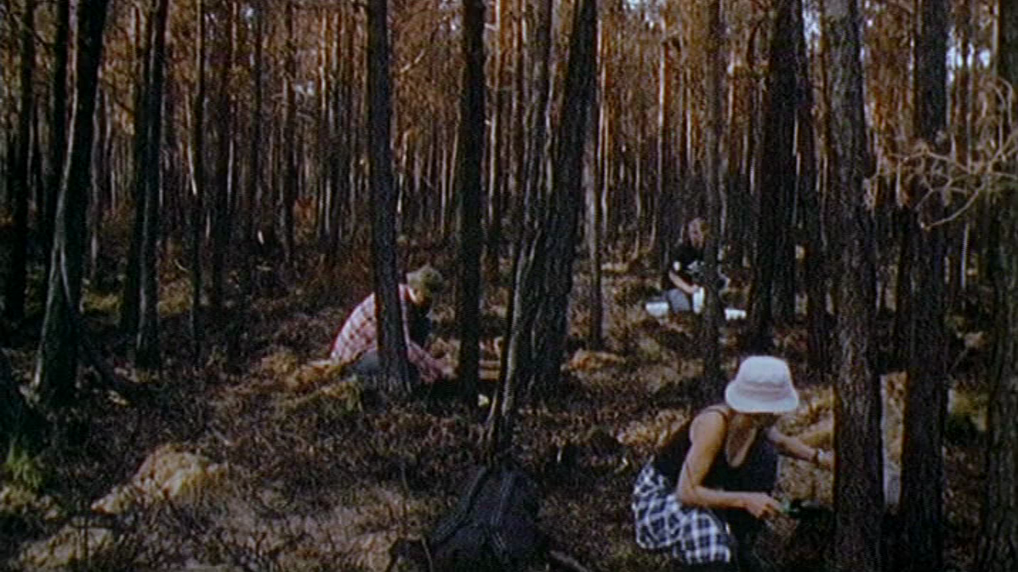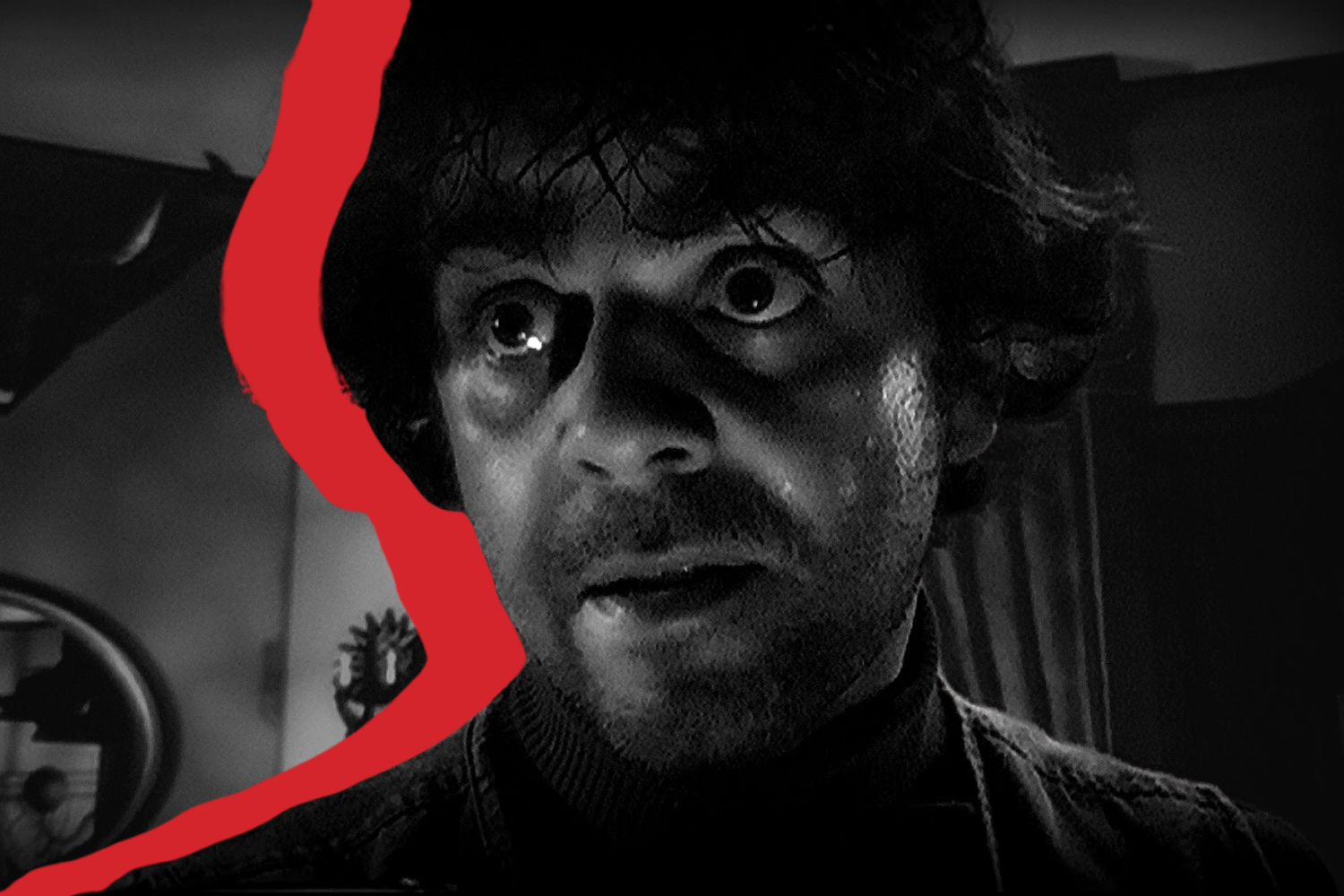Editorials
How ‘The Unknown’ Revived Swedish Horror
March 15th, 2021 | By Markus Amalthea Magnuson

In the summer of 1999, a small production team led by director Michael Hjorth packed their gear and headed for the vast natural reserves south of Stockholm. Their goal was to shoot a rarity in the Swedish film landscape: The Unknown, one of the very few horror movies released theatrically within the country.
Most Swedes might remember this story about five biologists sent out to examine the grounds in the aftermath of a major forest fire as merely “that Blair Witch rip-off.” In anticipation of its release in October 2000, almost all critics compared The Unknown to The Blair Witch Project that had its Swedish premiere the year before.
Even though The Unknown is not strictly speaking found footage, the handheld camera and relaxed camping trip vibe indeed lure the audience towards such associations. This aesthetic caused many movie websites to list it as found footage incorrectly. In fact, most Swedish film journalists expressed some form of disappointment in what they perceived as a lack of originality.
But these dismissive judgments all overlook how The Unknown managed to navigate the very particular circumstances of the Swedish film industry. The mere existence of The Unknown is an impressive feat considering both the competition and the establishment’s disposition against genre films.
How Swedish feature films are financed
Much of the feature film production in Sweden revolves around the Swedish Film Institute, the national film board. This organization provides financial backing in many forms, ranging from talent development to marketing and technology and everything in between.
Most coveted—now and historically—are the advance grants for feature films. This grant is a sum of money that goes directly towards production and often makes up a significant portion of the film’s entire budget. Unlike typical debt, this so-called “soft” money only has to be paid back once the film’s financial results pass a certain threshold. Soft money systems for a film production like this are prevalent outside the United States.
The approval of an advance grant from the Swedish Film Institute can make or break a production. Maybe slightly less so now than in the early 1960s when the institute was founded, since financing options have diversified. Models for international co-production have evolved, and we’ve seen the introduction of entirely novel concepts such as crowdfunding.

What hasn’t changed is the arbitrary nature of how the institute assesses grant applications. This process involves no more than two individuals appointed as advisors for three-year terms and whose sole responsibility is to recommend applications to grant or deny. The CEO makes the formal decisions, but it is generally accepted that the two advisors are highly influential in what film productions to award money.
If this system sounds strange, you are not the first one to think so. It was created more or less single-handedly by Harry Schein, the somewhat idiosyncratic founder of the Swedish Film Institute. His central idea was to channel a small amount of money from every movie ticket sold into a large fund from which grants could be distributed.
So far, so good, but there were some self-evident problems in determining whom to grant money. Schein’s solution to this was to formulate certain principles regarding the contentious term “quality” and let supposedly impartial experts decide based on those principles. The controversy around what constitutes quality and how it has guided the Swedish Film Institute’s work is an ever-present dimension of Swedish film history, especially in horror films.
Domestic preconceptions about horror films
It should be reasonably clear that genre films worldwide have been treated with suspicion for most of history. Even today, some film critics make sketchy attempts at separating “elevated” horror movies from the rest in the genre, in line with an often-implicit tradition of keeping “high” and “low” culture apart. In the context of judging grant applications for film production, it makes very much sense that such sentiments are at play, too, whether the advisors realize it or not. This ties into a frustration many genre buffs feel when the latest sci-fi or fantasy movie is handed for review to a writer with no knowledge of the genre.
Horror movies are often misunderstood, and some critics fail to meet them on their own merits. This disconnect might very well have resulted in fewer Swedish horror films getting the necessary funding. In turn, this has potentially led to a vicious circle where there are very few previous examples to hold up in an attempt to dispel any myths about horror as “low” or lacking quality.
Until The Unknown, the entire history of theatrical releases in Sweden had included a mere ten films in the horror genre. During all of the 1970s and ’80s—undoubtedly one of the great golden ages of horror—only three Swedish horror films premiered in theaters. One more saw daylight in the ’90s: the splatter satire Evil Ed, an overt mockery of the censorship practices then still carried out by the Swedish Film Institute. This curious lack of Swedish horror would continue until 2008 when Tomas Alfredson made his universally acclaimed vampire coming-of-age tale Let the Right One In that would completely redraw the map of Swedish genre films.
But in the previous century, the question of whether a proposed Swedish horror movie could work or not—from a production and audience perspective—becomes impossible to answer without workable data. The Unknown was already shot and edited before the filmmakers approached the Swedish Film Institute to ask for funding to finish post-production.
Maybe it couldn’t have happened in any other way than presenting an existing movie. They got more than three times what they had spent themselves so far. Some money went to developing 35mm copies from the original video, albeit using the old-fashioned guerilla method of filming the video with a 35mm camera in a dark basement. The Unknown was now ready for theater exhibition. Following its premiere, it entered that exclusive circle of Swedish horror films with a theatrical release.
Bringing The Unknown to life
Against this backdrop, it is a small miracle that The Unknown even got made. That the movie operated on a microscopic self-supplied production budget was an essential factor. All cast members got a stake in the movie instead of a salary. Behind the scenes was a relatively new production company with fresh ideas. Tre Vänner (“Three Friends”) was founded just a few years prior by Hjorth and two partners, one of them Tomas Tivemark, who also co-wrote the screenplay for The Unknown and played one of the parts. It was shot in a week, in chronological order—since the team could not afford a script supervisor to oversee continuity—at a budget of about $30,000.
To achieve a more “Northern” feel, the filmmakers augmented footage of pine trees and wetlands in their immediate surroundings with B-reel from far up the country, achieved by the cinematographer Anders Jacobsson simply shipping a video camera and some sparse instructions to the “second unit”—his grandmother.
Not all qualities of The Unknown are of the thrifty kind—audiences seeking out the film today will discover it is quite enjoyable. Able to shed the restraints of a large production apparatus, The Unknown gained some additional benefits. There is a long-standing tradition in Sweden of film actors also working extensively in theatre. Because of this, their screen-acting sometimes comes across a bit stilted, what some critics would call the “Bergman effect.”

The Unknown, on the other hand, has a natural quality in this aspect. With then relatively unknown actors settled in a tiny camp instead of a film studio, our motley crew of biologists believably comes across as a group of friends on an everyday occasion. It’s almost as if the green, serene surroundings peel away the actors’ stage background. This spontaneity, in turn, helps build the tension that grows in the group as personal characteristics get in the way and relationship history uncover.
The more significant concern is not interpersonal issues, of course, but the titular “unknown” they find lurking among the trees. Strange cadavers, unnatural soil samples, and abnormal heat all point towards something foreign and parasitic. With some obvious tribute to classics such as The Thing and Invasion of the Body Snatchers, this primeval woodland mystery serves as an effective horror slow-burner.
This is especially true considering the filmmakers’ admirable—but far too uncommon—decision to keep the elements of dread out of sight and let the viewer build them in their own mind. It might have been a budget necessity, or an artistic decision, or both. In any case, it adds a mysterious nature that is just what a work of forest horror needs.
And even for those who regard The Unknown as nothing more than a Blair Witch rip-off, the success of Hjorth and company proved to Swedish moviegoers that there was an audience for this type of cinema. Micro-budget or not, The Unknown offered something fresh, and that legacy—at least within the borders of Sweden—remains secure to this day.
Conclusion
The Unknown was a unique experiment in Swedish horror with an undeserved reputation as entirely derivative of other more critically acclaimed films. It is currently only available in Sweden on VOD and DVD, but hopefully, chances are not too slim for a modern re-release sometime in the future. Getting on well together with the conservative film industry and challenging the bias against horror in its domestic market, The Unknown managed to provide a creepy piece of Northern lore. One day the distributor might realize they have a milestone on their hands.
Visit our Editorials page for more articles like this. Ready to support more original horror criticism? Join the Certified Forgotten Patreon community today.


